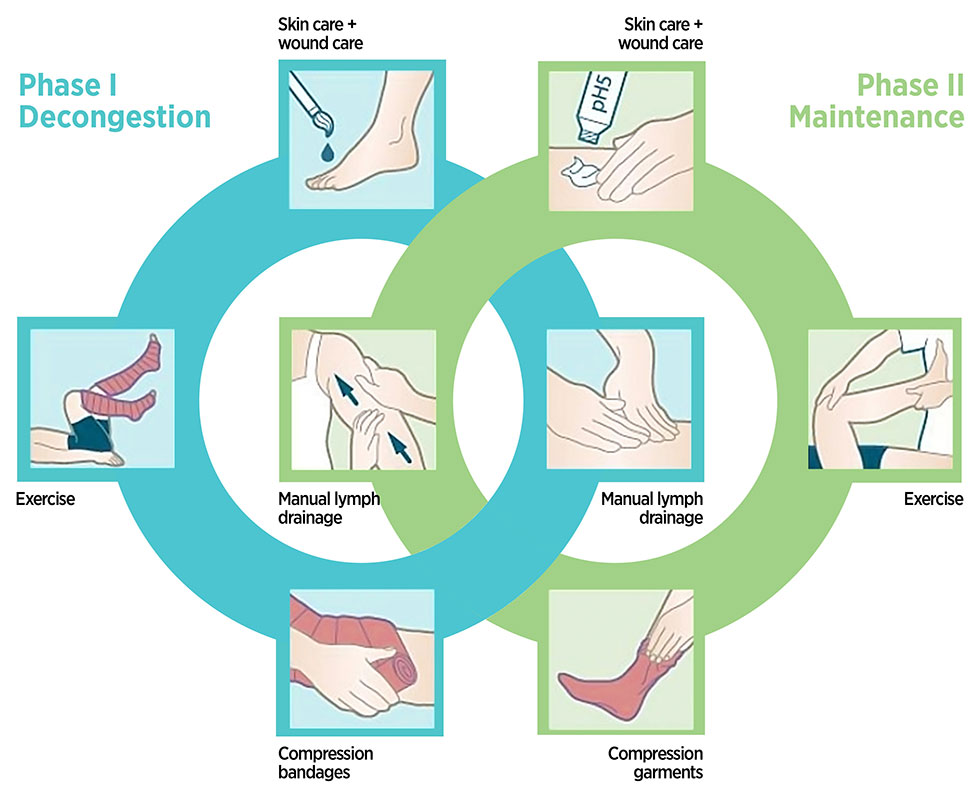
Edema and Phlebolymphedema
Swelling in the legs can be a sign of poorly functioning veins. When the veins fail, blood that normally flows up toward the heart is pulled down by gravity to pool inside the legs. The backflow, called venous reflux, strains the vein walls and the plasma leaks out into the surrounding space leading to swelling in the feet, ankles, and calves. Leg swelling and associated skin changes are called chronic venous insufficiency (CVI).
Edema is primarily noted at the end of the day that can be improved with leg elevation. Left untreated, the recurrent and persistent accumulation of fluid inside the legs begins to stress the lymphatic system. The lymphatic system works as a safety valve to remove excess fluid from the legs. When both, the venous system and lymphatic systems fail, the condition is known as phlebolymphedema.
Lymphatic vessels carry protein-rich fluid and other macromolecules which leak out into the interstitial space. This can make the edema from CVI even worse. Furthermore, the lymphatic fluid triggers an inflammatory reaction that can cause the skin to become red and warm to touch, severe itching, and fluid leakage. Over time, fibrosis sets in, where some of the soft tissue and skin gets converted to hard “scar-like” tissue. At this stage, the condition is largely irreversible.
Modern treatment options available for diseased veins are safe, effective, and require no downtime. Almost all insurance companies offer coverage for the treatment of symptomatic vein problems. However, we do not have definitive treatments available for the management of lymphedema. Treatment of lymphedema, including phlebolymphedema, involves complete decongestive therapy (CDT) and lifelong conservative therapy. Hence, early diagnosis and treatment of edema offers the best chance for long-term symptom relief and protection against complications.
Lymphedema
Complete Decongestive Therapy (CDT) is the gold standard for lymphedema management and is divided into two phases:
- Phase I – Decongestion to decrease the swelling in the limb to as close to normal as possible with the assistance of a lymphedema therapist.
- Phase II – Maintenance that involves continued care at home.


